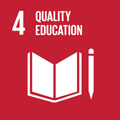- Docente: Chiara Cevoli
- Credits: 10
- SSD: AGR/09
- Language: Italian
- Teaching Mode: Traditional lectures
- Campus: Cesena
- Corso: First cycle degree programme (L) in Viticulture and Enology (cod. 8527)
Learning outcomes
At the end of the course, the student has both a technical and operational understanding of the machines used in viticulture, enabling them to make informed technical and economic decisions regarding worksite planning. They are capable of managing the use of machinery in the field and training technical staff on their optimal use.
Furthermore, the student acquires basic knowledge of the main machines and equipment used in the winemaking industry and their modes of operation. They are able to independently make operational choices based on production needs and specifications, and can develop procedures for their use and maintenance.
Course contents
VINEYARD MECHANIZATION
Introduction to vineyard mechanization: assessment of the historical and modern importance of mechanization.
Basics of agricultural mechanics: technical features and use of tractors and other power units; safety aspects.
Machines for vineyard establishment: land preparation, drainage, and installation of posts.
Machines for canopy management: pruning, leaf removal, trimming, and trellising.
Machines for inter-row management: soil cultivation and grassing.
Plant protection machines: sprayers, sprayer calibration, and drift reduction.
Harvesting: grape harvesters and transport.
Precision viticulture: precision technologies for vineyard monitoring and management.
ENOLOGICAL EQUIPMENT
Machine components: machines and equipment: definitions, engines, transmissions, and actuators.
Reception and preliminary processing systems: weighing, sampling, loading, and grape transport (description and sizing of screw conveyors, belt conveyors, and bucket elevators).
Crushing, destemming, combined crushing-destemming, and draining systems.
Presses: discontinuous and continuous presses; plate presses; pneumatic membrane presses (lateral, central, vacuum); impulse screw presses.
Cell disruption/explosion systems.
Thermovinification systems.
Fermenters: forced and intensive pump-over with intact cap, forced and intensive pump-over with dispersed pomace, pomace recirculation in must, self-pump-over systems, horizontal rotary fermenters, and cryomacerators.
Flotation and settling systems: Stokes’ law, static and dynamic sedimentation, continuous and batch flotation systems, centrifugal separators.
Filtration systems: press filters, lees filters, vertical or horizontal plate filters, rotary vacuum filters, membrane filters, and crossflow filters.
Winemaking pumps: basic fluid physics concepts (flow rate, pressure, energy, power, head); volumetric pumps (reciprocating: piston, diaphragm; rotary: elliptical rotor, peristaltic, flexible impeller, moving pad, progressive cavity, lobe); centrifugal pumps.
Heat exchangers: heat transfer; co-current and counter-current exchange; types of exchangers: concentric tube or monotube, scraped-surface, tubular bundles; coil exchangers, spiral exchangers, stamped plate exchangers, and plate heat exchangers
Readings/Bibliography
G. Pellizzi, Meccanica e meccanizzazione agricola. Edagricole Bologna, 1996.
-R. Castaldi. Meccanizzazione del vigneto. Edizioni l'informatore agrario,Verona, 2018.
-G. Nardin, A. Gaudio, G. Antonel, P. Simeoni. Impiantistica enologica. Edagricole, Bologna, 2006.
-P. De Vita, G De vita, Manuale di meccanica Enologica. Hoepli Milano, 2011.Teaching methods
Lectures are primarily based on the critical analysis of illustrations and technical diagrams of machines and equipment.
During the course, images of machines and systems from catalogs or websites of companies supplying machinery, equipment, and accessories are shown. Additionally, videos and animations of machines in operation are presented, allowing students to observe the equipment in working conditions within a real production setting.
To complement the lectures, visits to manufacturing companies, wineries, and trade fairs are organized.
Assessment methods
The assessment is oral and aims to verify the acquisition of the knowledge outlined in the course program. The exam generally consists of four questions: two focused on vineyard mechanization and two on enological equipment. The final grade, expressed in thirtieths, equally considers the evaluation of each of the two parts.
The evaluation is based on the student's level of preparation and abilities:30–30 with honors: very in-depth knowledge, excellent critical thinking, and fully appropriate technical language;27–29: good preparation, strong analytical skills, and correct use of terminology;23–26: adequate preparation, sufficient analysis, and correct language;18–22: minimal preparation and analysis, with barely acceptable language.
Students with learning disorders and\or temporary or permanent disabilities: please, contact the office responsible (https://site.unibo.it/studenti-con-disabilita-e-dsa/en/for-students ) as soon as possible so that they can propose acceptable adjustments. The request for adaptation must be submitted in advance (15 days before the exam date) to the lecturer, who will assess the appropriateness of the adjustments, taking into account the teaching objectives.Teaching tools
Whiteboard; video projector; PC; internet connection; specialized seminars; visits to facilities; machine materials and components shown during lectures
Office hours
See the website of Chiara Cevoli
SDGs

This teaching activity contributes to the achievement of the Sustainable Development Goals of the UN 2030 Agenda.
